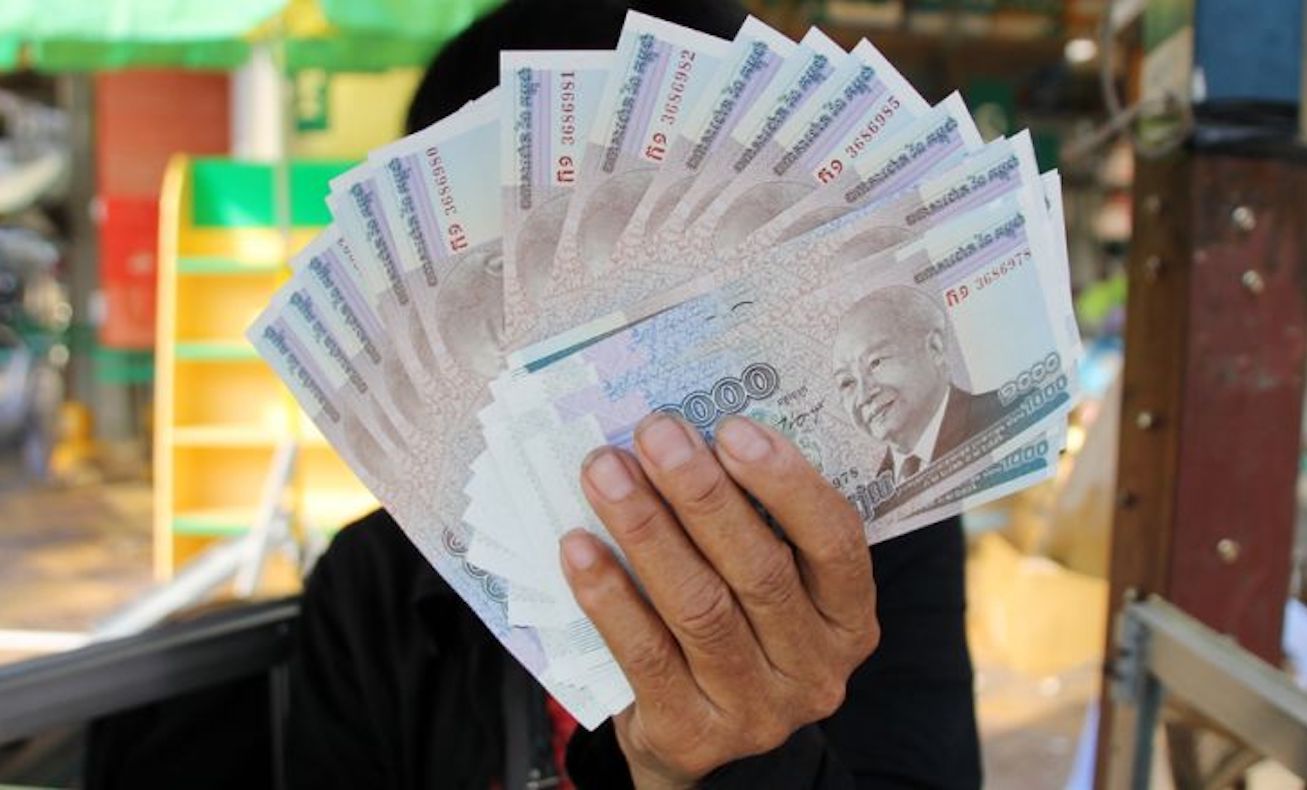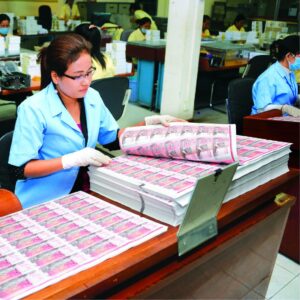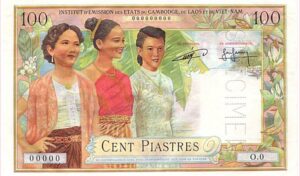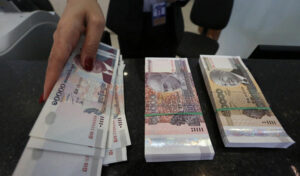Cambodian currency shows the pathway to growth
Cambodia’s Angkor era may tell us something critical about the power of a monetary system.
At its height between the 9th and 15th centuries, Angkor is thought to have been the world’s largest urban settlement, and the seat of an empire that covered much of Southeast Asia. Surprisingly for such a large and sophisticated civilization, it was run entirely through trade and barter. The Khmer Empire had no form of currency, even though we know from archeological finds that Angkor was aware of coinage from other countries.
Over the years rival empires grew richer and more powerful, eventually overrunning what is now Cambodia. We do not know for sure why the Khmer Empire collapsed, but one theory is that its lack of currency gradually undermined its economy.
This lesson is not unique to Angkorian times. Throughout Cambodia’s history, the monetary system and political stability have been closely linked to each other.
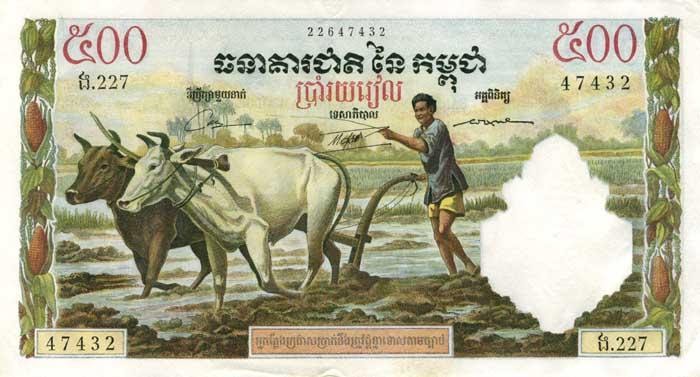
The new Khmer riel was first introduced in 1955 after independence. Growth was strong in this period, until regional and global instabilities shook Cambodia’s foundation. As instability took hold in the early 1970s, the government often printed money to finance budget deficits.
A currency collapse first took place in 1974 as Cold War conflicts increasingly spread to Cambodia. Aid from the United States made up more than 90% of the budget, with taxes accounting for a mere 2% of government income, according to the Sosoro Museum in Phnom Penh.
In 1975 the Khmer Rouge took control of the country and the use of money was banned. In a vivid representation of the violent end of Cambodia’s monetary system, the National Bank of Cambodia building in Phnom Penh was blown up by the Khmer Rouge.
After the overthrow of the Khmer Rouge, currency was reintroduced, but the underlying poverty and continuing conflict contributed to monetary instability with bouts of high inflation.
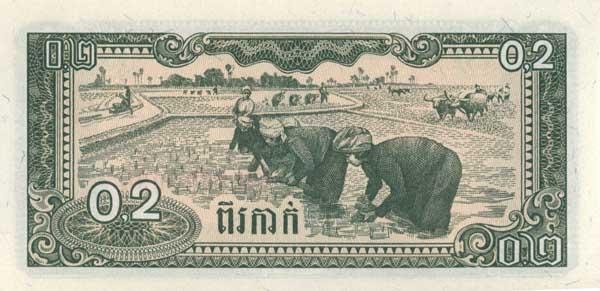
The United Nations Transitional Authority in Cambodia (UNTAC), in place from 1992-1993, brought with it what has been called a “dollar tsunami.” It’s estimated the international community invested more than US$3 billion during those years and helped bring about the dollar-dominated monetary system we see today.
Today’s world presents its own challenges to Cambodia’s growth and its monetary system. The Covid-19 pandemic has slowed the global economy and the country is directly impacted by the slump in world trade. In 2020 alone, economic growth could contract by 4.1% as a result of the pandemic, according to the UN Development Program.
Many governments across the world have taken advantage of historically low interest rates and raised funds by issuing bonds to finance Covid-19 response and recovery plans. The Cambodian Government at present has no instruments for domestic or international borrowing from the capital market, and instead relies on concessional loans for financing new debt.
In this emerging landscape, finding additional resources is imperative to support public-sector development that enables Cambodia to reach higher levels of investment and inclusive growth. New channels of public borrowing by issuing bonds in local currency is one such opportunity.

The issuance of Khmer riel bonds would not only ease borrowing constraints faced by the government, but would also facilitate development of Cambodia’s private-sector capital market, by offering a debt instrument with a low-risk rate, creating a foundation for a long-term monetary policy.
This local-currency bond would also underpin the government’s effort on de-dollarization and protect the economy against external shocks by reducing reliance on foreign currencies and other risks associated with currency-exchange-rate fluctuation.
It would also empower the National Bank of Cambodia to take more control of monetary policy. This measure would allow for the expansion of new sources of public finance that could be used to achieve the Cambodian Sustainable Development Goals (CSDG).
The global issues of today make the need for development financing increasingly evident. As Cambodia aims for graduation from Least Developed Country status by 2027, and achievement of Upper Middle-Income Country status by 2030, it needs to position itself with its monetary policy. The power of a strong financial framework with a solid monetary system to respond to global uncertainty remains as paramount as it was during Angkorian times.
The Integrated National Financing Framework (INFF) to Catalyze Blended Finance for Transformative CSDG Achievement program is funded by the Joint SDG Fund through UNDP and UNCDF from 2020-2022. It sets an ambitious agenda to build a high-quality, demand-driven financing framework for Cambodia, enabling the expansion of development resources in order to accelerate achievement of the CSDGs. Asia Times

